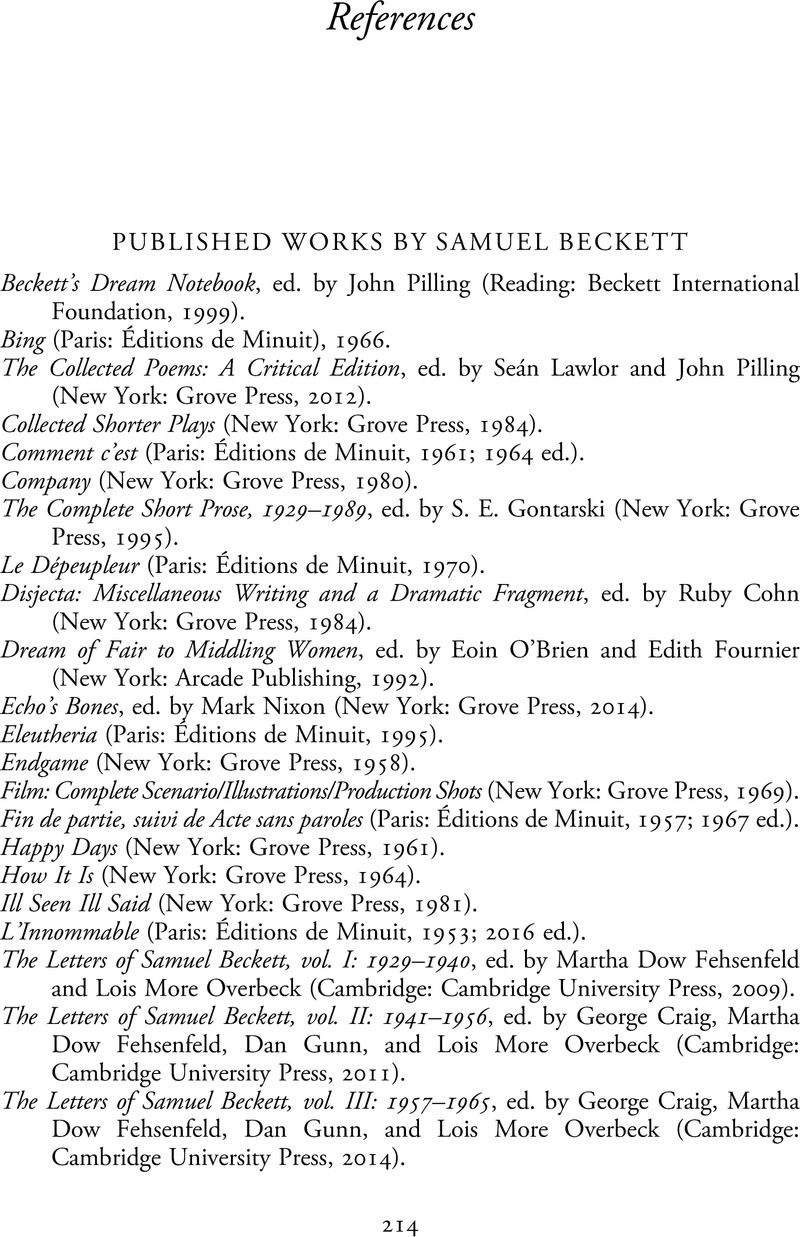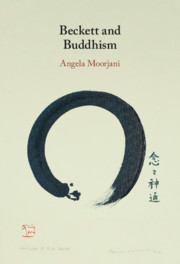Book contents
- Beckett and Buddhism
- Beckett and Buddhism
- Copyright page
- Dedication
- Contents
- Figures
- Acknowledgments
- Abbreviations of Editions Used
- Introduction
- Chapter 1 Schopenhauer’s Buddhism Revisited: Recent Archival Evidence
- Chapter 2 East–West Dialogue via Schopenhauer
- Chapter 3 Buddhist and Mystic Threads in the Early Fiction
- Chapter 4 Beckett’s Paradoxical Logic through Buddhist and Western Lenses
- Chapter 5 The Coincidence of Contraries and Noh Drama
- Chapter 6 The No-Self Staged and Voices from Elsewhere
- Chapter 7 Rebirth and the Buddhist Unborn in the Fiction and Drama
- Chapter 8 Dreaming ‘all away’ in the Final Texts
- References
- Index
- References
References
Published online by Cambridge University Press: 08 July 2021
- Beckett and Buddhism
- Beckett and Buddhism
- Copyright page
- Dedication
- Contents
- Figures
- Acknowledgments
- Abbreviations of Editions Used
- Introduction
- Chapter 1 Schopenhauer’s Buddhism Revisited: Recent Archival Evidence
- Chapter 2 East–West Dialogue via Schopenhauer
- Chapter 3 Buddhist and Mystic Threads in the Early Fiction
- Chapter 4 Beckett’s Paradoxical Logic through Buddhist and Western Lenses
- Chapter 5 The Coincidence of Contraries and Noh Drama
- Chapter 6 The No-Self Staged and Voices from Elsewhere
- Chapter 7 Rebirth and the Buddhist Unborn in the Fiction and Drama
- Chapter 8 Dreaming ‘all away’ in the Final Texts
- References
- Index
- References
Summary

- Type
- Chapter
- Information
- Beckett and Buddhism , pp. 214 - 231Publisher: Cambridge University PressPrint publication year: 2021



